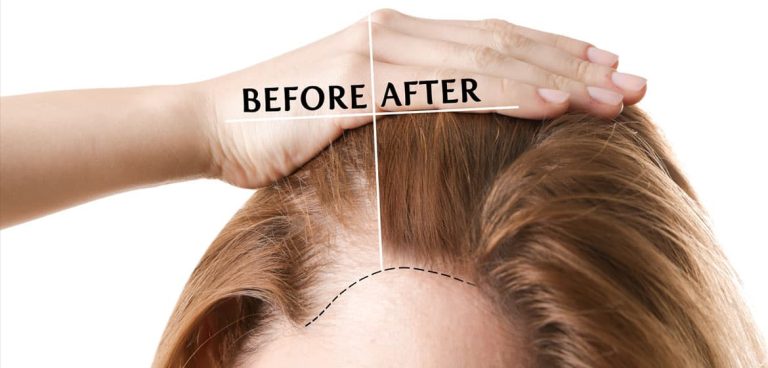Introduction to Body Sculpting
Body sculpting, often referred to as body contouring, has emerged as a transformative solution for individuals seeking to reshape their physique without the invasive nature of traditional surgeries. This evolving field combines cutting-edge technology and innovative techniques to help people achieve their desired aesthetic goals. Whether one is looking to eliminate stubborn fat, enhance muscle definition, or improve skin texture, body sculpting offers a variety of options to cater to different needs and preferences. By exploring the intricacies of body sculpting, this comprehensive guide aims to illuminate the available methods, benefits, considerations, and future trends that define this fascinating domain.
What is Body Sculpting?
Body sculpting encompasses a range of surgical and non-surgical procedures aimed at altering the shape and contour of the body. Typically, these procedures target specific areas where individuals tend to accumulate stubborn fat or excess skin, such as the abdomen, thighs, arms, or buttocks. Unlike weight loss, which focuses on fat reduction throughout the entire body, body sculpting targets localized areas to create a more aesthetically pleasing silhouette.
History and Evolution of Body Sculpting
Body sculpting has roots that can be traced back to ancient civilizations that utilized various forms of alteration for beauty standards. However, it wasn’t until the late 20th century that modern body contouring techniques gained prominence, launching into an array of surgical and non-surgical solutions. Pioneering techniques such as liposuction revolutionized the field in the 1970s, while advancements in laser technology and non-invasive treatments have continuously shaped the landscape throughout the years. With consumer demand for less invasive options growing, innovations such as cryolipolysis and radiofrequency treatments have made body sculpting more accessible and appealing to the general population.
The Science Behind Body Sculpting
The effectiveness of body sculpting procedures can be attributed to scientific understanding of human physiology and fat metabolism. Various techniques are based on methods that disrupt fat cells, prompting their destruction while minimizing damage to surrounding tissues. Through mechanisms such as heat, cold, or sound waves, targeted fat cells are either eliminated or their structure altered, allowing the body to naturally flush them out over time. This biological process enhances body contouring results and promotes a more refined appearance.
Types of Body Sculpting Methods
Understanding the different body sculpting methods available can empower individuals to select the approach that best aligns with their goals, budgets, and lifestyles. Below are the primary categories of body sculpting techniques.
Surgical Body Sculpting Procedures
Surgical body sculpting encompasses more invasive options that often require anesthesia and recovery time. These surgeries typically involve the removal of excess fat and skin. Some prominent surgical procedures include:
- Liposuction: A procedure that removes stubborn fat deposits through suction techniques. Liposuction can be performed on various body areas, including the abdomen, thighs, arms, and neck.
- Tummy Tuck (Abdominoplasty): This procedure eliminates excess skin and fat from the abdomen while tightening the underlying abdominal muscles, giving a firmer appearance.
- Body Lift: Designed for individuals who have experienced significant weight loss, a body lift removes excess skin and tightens various body areas, including the abdomen, thighs, and buttocks.
Nonsurgical Body Sculpting Techniques
Nonsurgical body sculpting techniques appeal to those looking to avoid the risks associated with surgery. These methods typically have minimal downtime and involve less discomfort. Notable nonsurgical options include:
- CoolSculpting: A non-invasive procedure that eliminates fat cells through cryolipolysis, using controlled cooling to freeze and destroy fat cells.
- Ultrasound Cavitation: This technique utilizes ultrasound waves to target and break down fat cells without affecting surrounding tissues.
- Radiofrequency Treatments: Radiofrequency energy heats and tightens the skin while targeting fat cells, promoting collagen production and skin firmness.
- Emsculpt: A treatment that combines high-intensity focused electromagnetic (HIFEM) energy with toning and muscle-building effects, suitable for body sculpting and muscle enhancement.
Comparing Body Sculpting Technologies
Each body sculpting technology has unique advantages and disadvantages, making it crucial for potential clients to understand how they compare. Factors such as effectiveness, downtime, pain levels, and costs can differ significantly across methods. For instance, CoolSculpting offers a non-invasive solution with minimal downtime but may require multiple sessions for optimal results, whereas liposuction can produce significant fat removal in a single session but comes with a longer recovery period. Discussing expectations with a qualified professional can guide individuals toward the most suitable option.
Benefits of Body Sculpting
The advantages of body sculpting extend beyond aesthetic improvements, offering a range of psychological and physical benefits:
Enhanced Body Contour and Firmness
One of the most apparent benefits of body sculpting is the ability to achieve a more contoured and firm appearance. These procedures can redefine body structure and help individuals reach their ideal silhouette, enhancing various facets of self-image and satisfaction with personal aesthetics.
Long-Term Results and Maintenance
Many body sculpting procedures yield long-lasting results. Nonsurgical options generally encourage a sustainable lifestyle, including exercise and proper nutrition, which contribute to maintaining results over time. Surgical options, on the other hand, can offer permanent alteration provided individuals adhere to post-operative care and weight management.
Boost in Confidence and Self-Esteem
Improving body contour can lead to renewed confidence and enhanced self-esteem, empowering individuals to engage in social activities or wear clothing they may have previously avoided. This mental uplift from aesthetic changes can have a profound impact on overall quality of life.
Risks and Considerations
Despite the numerous benefits, body sculpting procedures can entail risks and considerations that potential candidates should understand before proceeding:
Potential Side Effects of Body Sculpting
Although most body sculpting procedures are generally safe, they can result in temporary side effects, including bruising, swelling, and discomfort. Serious complications, including infection and poor healing, may arise, particularly in surgical procedures. Consulting with a qualified practitioner can help mitigate these risks.
Who Should Consider Body Sculpting?
Body sculpting is ideal for individuals seeking improvement in localized fat areas resistant to diet and exercise. However, it is crucial to set realistic expectations. Patients should be at or near their target weight and maintain a stable weight to maximize the efficacy of the procedure. Consulting a licensed provider is vital to determine individual candidacy.
Tips for a Successful Body Sculpting Experience
To enhance the likelihood of a successful body sculpting experience, potential candidates should:
- Choose a qualified and experienced practitioner.
- Understand the benefits and limitations of their chosen procedure.
- Engage in a consistent fitness routine before and after treatment.
- Maintain a healthy diet to support overall results.
Future Trends in Body Sculpting
The body sculpting industry is evolving rapidly, with research and technological advancements paving the way for groundbreaking innovations. Future trends include:
Emerging Technologies in Body Sculpting
Advancements in technology are continually enhancing the efficiency and effectiveness of body sculpting techniques. Emerging technologies may include improved fat-dissolving injectables, advanced laser technologies, and hybrid treatments that combine vessels and fat removal capabilities.
Expected Advances in Non-Invasive Techniques
As consumer demand for non-invasive and minimally invasive procedures rises, the industry anticipates the development of more refined non-surgical options. These innovations aim to minimize downtime, enhance results, and expand the range of body areas that can be sculpted effectively.
The Influence of Client Preferences on Body Sculpting
As body positivity continues to shape societal standards of beauty, tailoring body sculpting procedures to address individual aesthetic preferences will become increasingly important. This client-centric approach encourages personalized treatment plans based on unique goals and expectations, fostering more satisfaction with results.




